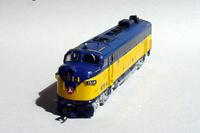
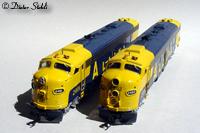
 |
 |
I am basically a narrow gauger (HOn3), I have a fairly large generic Colorado layout and I just love to model the sometimes homemade equipment of these narrow gauge railroads. But narrow gauge is not only historical. In Switzerland we have very modern narrow gauge railroads doing everything standard gauge railroads do. Therefore, I also wanted some modern narrow gauge for contrast and since I model U.S. prototype there was practically only one option: the WP&YR. In order to see this railroad I visited Alaska twice - in 1996 and 1998. On the first trip I rode the ARR, and from that moment on I was also interested in this railroad. But as I mentioned above, I'm a narrow gauger and the ARR is not narrow gauge.
In Switzerland there is quite a community of model railroaders following U.S. prototype and in the Zurich area we have 3 train shops carrying only U.S. models. This loose community (no club) organizes every two years a two day "Convention for American Railroad fans in Switzerland", and the main theme of this year's convention is "Locomotion". So I decided to build some models specifically for this convention and had the crazy idea to try if a narrow gauger has the skills to build modern diesels ... and because it's nice when your exhibit fully covers a theme, I decided it would be "Diesel Engines in Alaska 1976-2006", and - being perfectionist - of course in most configurations and liveries of that period. I had the WP&YR ones, but no ARR models yet. Get the message? I obviously didn't, because I really underestimated the amount of work. But most of the meanwhile 28 HO ARR models are now in the final stage of completion (after drilling more than 1,400 holes of 0.3 mm and adding 1,300 detail parts).
Our convention guide is online at http://www.trainmaster.ch/13-guide.pdf
I forgot to add some remarks in my previous emails:
- Detailing could become an endless (and ultimately almost not affordable) issue. Therefore, I had to restrict my detailing in some way and I decided to draw a horizontal borderline on the engines, above which I would detail and below which I would not, and I decided to use the lower edge of the body as my borderline. This means that I have not done any corrections and detailing so far (who knows what the future brings?) on the fuel tanks and trucks. #1826 even still has Blomberg i/o AAR trucks, but this will be corrected before the exhibition - the correct sideframes should arrive next week.
- Some details are not yet correct, mainly the air horns. The reason is simply the temporarily (or even longer term) unavailability of the correct type and I thought that a wrong 3-chime Leslie i/o a Nathan P3 is still better for the moment than no air horn at all. These are the compromises one has to make. I am grateful to some of my standard gauge modeler friends who shared their detailing parts goodies in order to help me out.
- Some lettering is home made and far from perfect, but I had to do it myself and I did not want to go into an additional expense for professional software. On the picture I will send you of #1500 in the "as delivered" livery, you will see that the herald is not completely correct, but I had to draw it in PowerPoint and print it on yellow Microscale trim film. Fortunately Randy Thompson sent me a herald as he had scanned it from an old timetable and it was perfectly suitable for reproduction.
So the models are not perfect, but best effort.
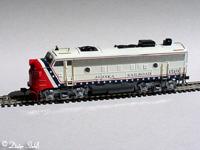 |
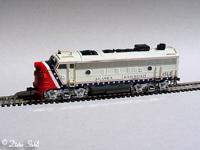 |
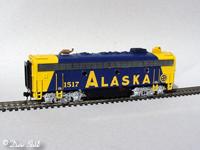 |
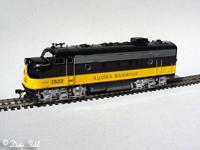 |
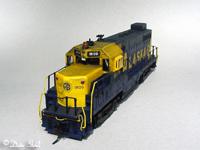 |
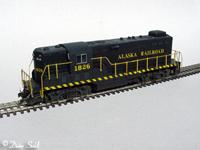 |
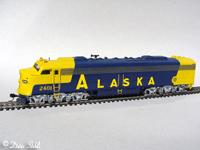 |
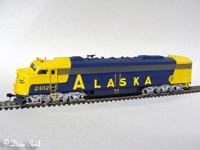 |
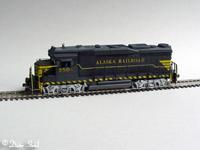 |
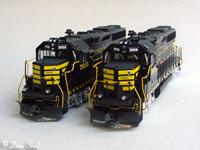 |
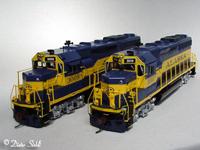 |
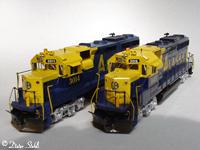 |
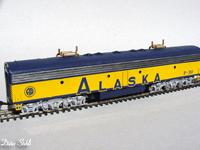 |
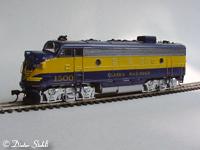 |
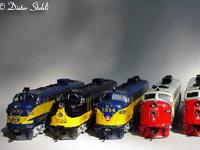 |
(11/10/06) The 13th Convention for American Railroadfans in Switzerland is over and was again an excellent event, featuring excellent modeling and attracting more than 3,300 paying visitors in two days. I had my ARR project exhibited, i.e. 27 of my 28 models depicting the diesel types in operation 1996-2006 with the ARR. I have detailed and/or modified these within the last 10 months specifically for this convention's main theme "Locomotion". I tried to always model two slightly different configurations of the same type, e.g. #3005 with L-shaped windshield and 4 side windows as opposite to #3008 with 4 windshields, the normal side windows, the star on its nose and the ursa major on the sides. I am sending in two batches pictures of my showcase at the convention, of some additional engines and of HEP #32. GP49 #2801 is in its early version with yellow smoke deflectors and the "as delivered" arrangement of the front railings. The yet to be finished 28th model, GP49 #2809, will be in the late configuration. I will send you a picture of that one too once it's finished.
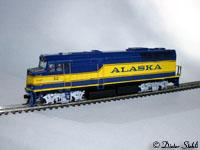 |
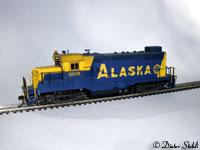 |
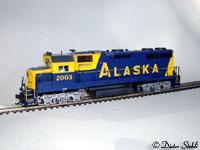 |
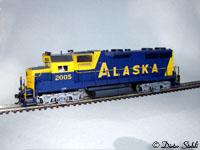 |
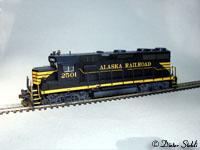 |
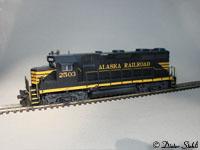 |
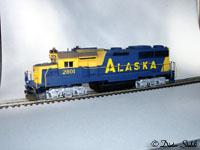 |
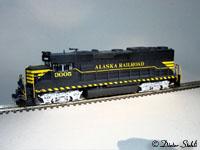 |
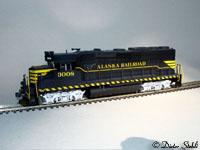 |
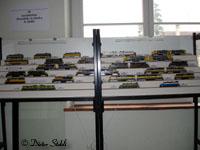 |